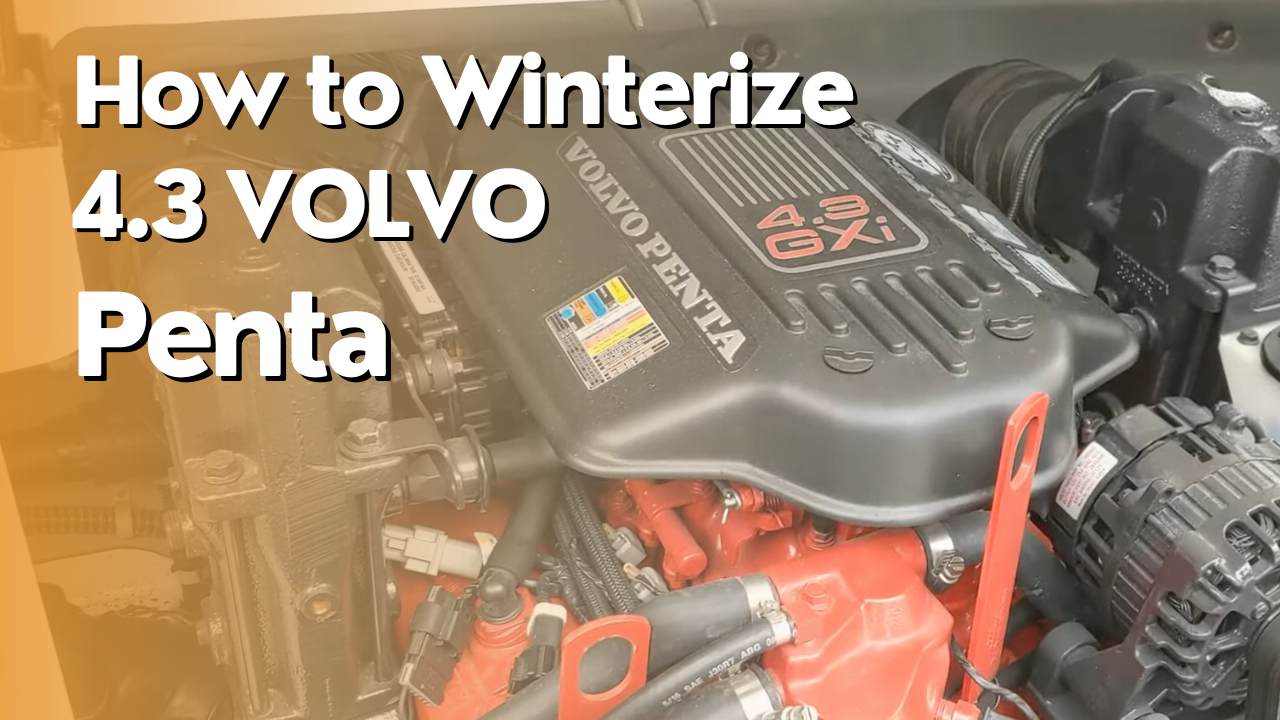4.3 Volvo Penta refers to the Volvo Penta 4.3-liter engine. The 4.3-liter engine is commonly used in boats and other marine applications. When it comes to the 4.3 Volvo Penta engine, winterizing is an essential procedure for preparing your boat for long-term storage. This process becomes especially crucial if you reside in a climate where the lake consistently freezes over during the off-season. Neglecting to winterize your boat can lead to significant and costly damage caused by freezing water in the engine block, water tank, or other onboard plumbing systems. In colder climates, numerous boat owners opt to integrate the “winterization” process with their annual maintenance routine.
Even in more temperate climates where freezing temperatures are unlikely, it’s still highly recommended to follow the winterizing procedure for long-term storage.
Properly winterizing your 4.3 Volvo Penta engine is crucial to protect it from freeze damage and ensure its longevity. By following these steps, you can confidently prepare your engine for the off-season. But before jumping into the steps let’s see what essential tools we need to execute this procedure.
Here are some of the tools you would need to winterize 4.3 volvo penta:
- Funnel
- Rags
- Gloves
- Eye protection
- Antifreeze
- Fuel stabilizer
- Fogging oil
Cleaning Fuel and Clean Filters
When it comes to cleaning fuel and filters during winterization, start by filling the tank with gas and adding a fuel stabilizer, such as Star brite EZ-To-Start, to prevent starting problems in the spring. Keeping the tank full reduces moisture condensation that can lead to water accumulation in the fuel-water separator. Remember to replace the filter element in your fuel filter-water separator to prevent varnish buildup that can hinder performance.
Adding Antifreeze for Boat Winterizing
Adding antifreeze is a critical step to safeguard your engine block from freeze damage. But how many gallons of antifreeze is needed to winterize an engineTo winterize an engine with antifreeze, you will need a five-gallon bucket and enough antifreeze for your engine and related plumbing. You might also need a helper if your engine takes a lot of antifreeze
For boat winterizing, there are two types of antifreeze to consider. Automotive antifreeze is suitable for closed, freshwater cooling systems, while non-toxic antifreeze, like West Marine propylene glycol antifreeze, is necessary for raw water cooling systems found in most boats. Opt for a high-rated antifreeze, such as a negative marine RV rated antifreeze, especially if you live in an area where temperatures drop below 50 degrees Fahrenheit during winterization.
Fogging the Engine on a Stern Drive
When it comes to fogging the engine, the process varies based on the type of boat you have. For stern drives, connect a garden hose to a faucet and attach it to a motor flusher, allowing the engine to warm up to operating temperature. Replace the garden hose with a winterizing kit and remove the flame arrestor from the carburetor. Start the engine again, open the valve to the tank of the winterizing kit, and observe antifreeze discharging from the exhaust during winterization.
Adding Antifreeze and Fogging the Engine on an Inboard
In the case of inboard engines, warm up the engine and prepare a five-gallon bucket filled with undiluted non-toxic antifreeze (propylene glycol). Close the intake seacock if your boat is in the water. Remove the raw water intake hose and insert it into the antifreeze-filled bucket. Run the engine at idle until antifreeze discharges from the exhaust outlet. Spray fogging oil into the carburetor to complete the winterization process.
Changing Engine and Transmission Oil
Changing engine and transmission oil is another crucial aspect of winterization. Warm up the engine and use an oil change pump to drain the old oil. Replace the oil filter to ensure the removal of contaminants and acids that can harm the engine during winter storage. Don’t forget to change the oil in the transmission as well for optimal performance.
Other Preventative Maintenance
To complete the winterization process, perform other preventative maintenance tasks. Inspect the exhaust system for carbon buildup or corrosion, check hoses for any signs of wear or damage, and tighten hose clamps as necessary. Seal all engine openings to prevent moisture from entering during storage. Attend to miscellaneous tasks such as adjusting the stuffing box, inspecting motor mounts, and lubricating grease points for comprehensive winterization.
Wrapping Up
By following the steps outlined above and using the necessary tools and materials, you can confidently prepare your engine and protect it from freeze damage during the off-season. And don’t forget to consult your specific engine’s manual for detailed instructions tailored to your Volvo Penta 4.3 model.

Diana Miller, is a dedicated nature enthusiast and an outdoor adventurer. She began leading groups for excursions in her teens and never stopped. Following her passion for nature, she gathers her friends for outdoor trips every now and then. And for the last 10 years, she has executed workshops on backpacking, snow kayaking and traveling that included her main motive of lightweight packing while outdoors. During leisure, she loves planning for her next adventure.









Leave a Comment